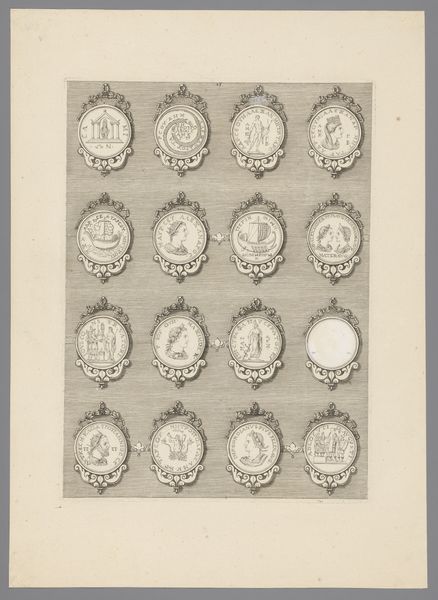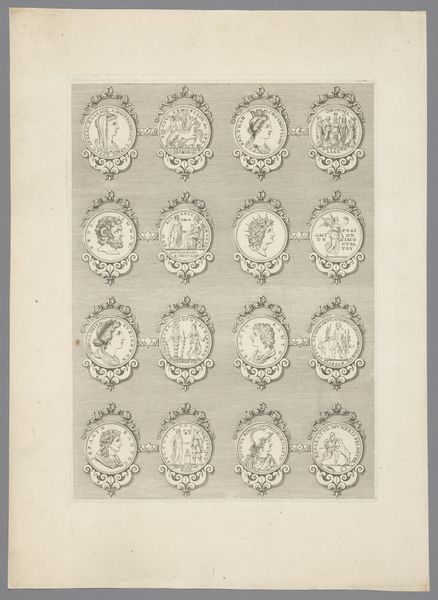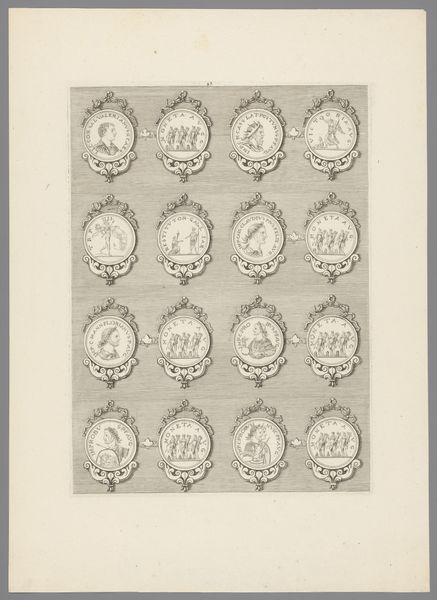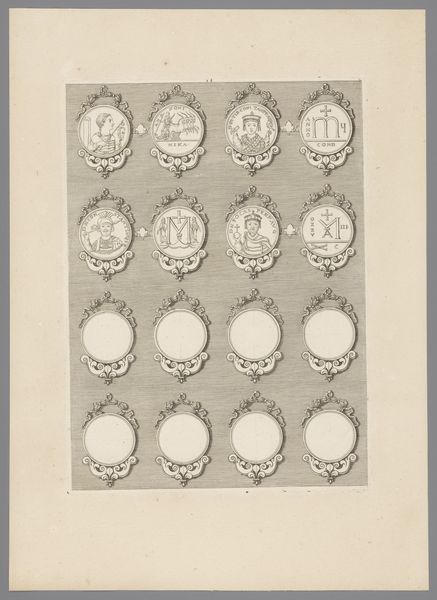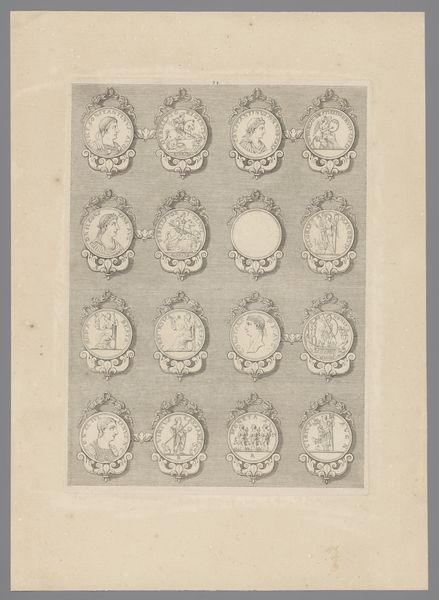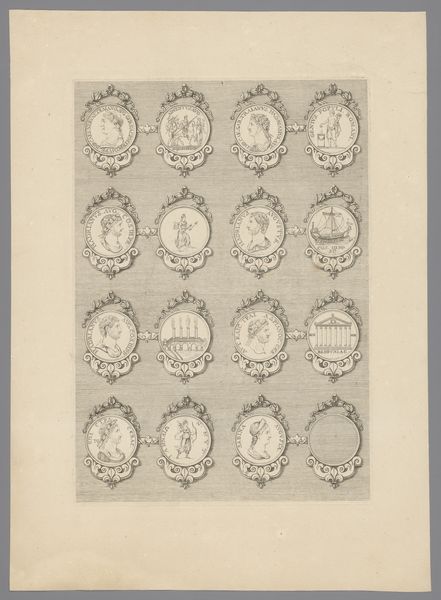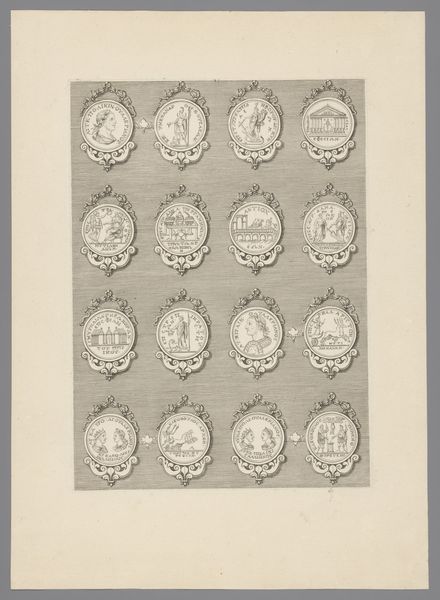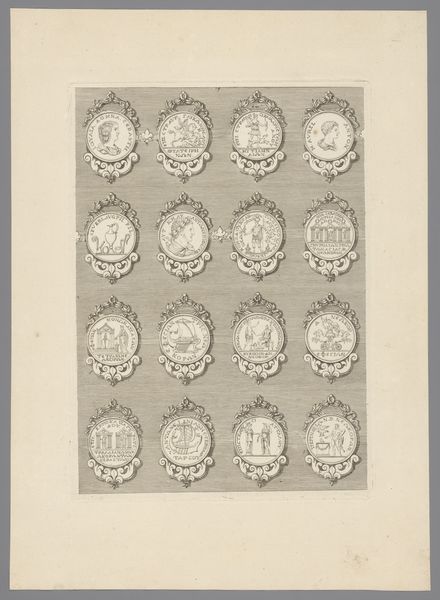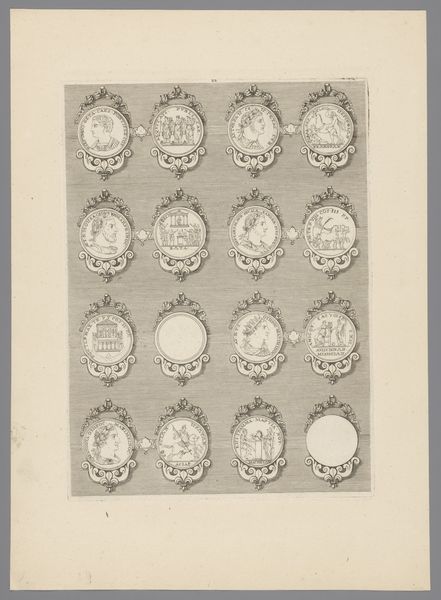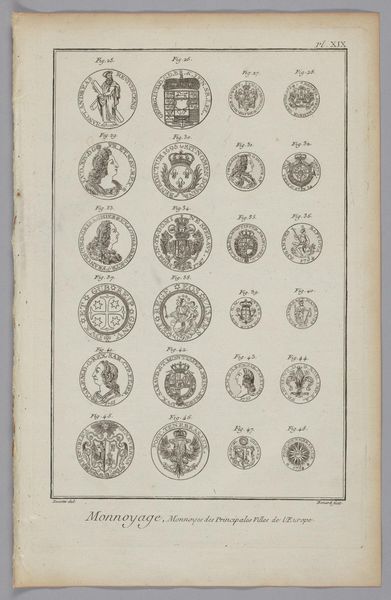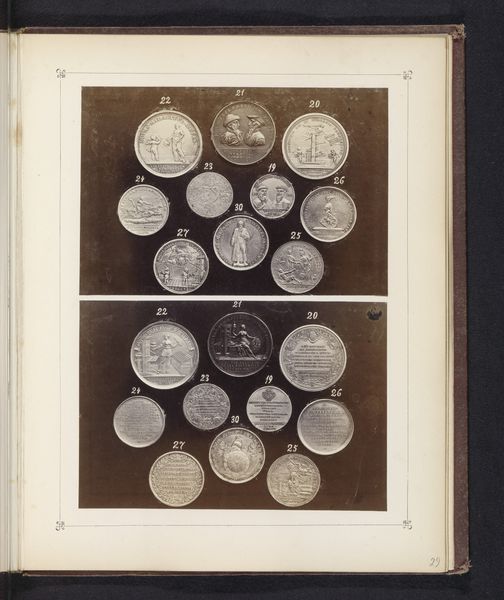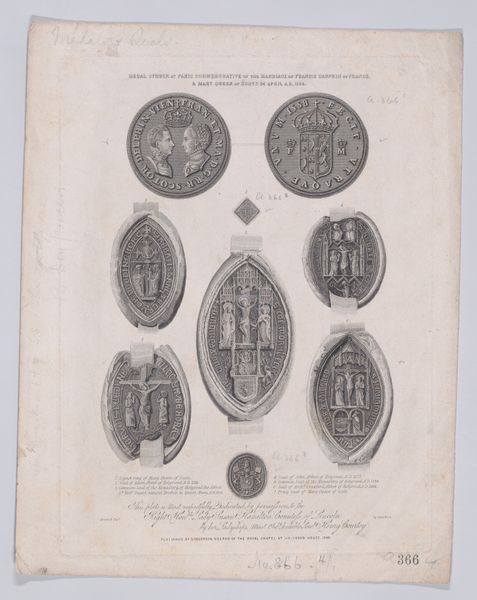
drawing, print, paper, engraving
#
portrait
#
drawing
#
aged paper
#
ink paper printed
# print
#
paper
#
11_renaissance
#
history-painting
#
engraving
Dimensions: height 401 mm, width 293 mm
Copyright: Rijks Museum: Open Domain
Curator: Here we have "Zestien penningen met versierde lijsten, waarvan één blanco" by Simon de la Boissière, dating from around 1647 to 1682. It's an engraving on paper. Editor: My first thought is of something incredibly intricate, almost like a page ripped from an alchemist's notebook. There’s a stillness about it. The shades are muted, and the repetition makes me think of symbolic codes. Curator: It’s a sheet of sixteen circular images framed in decorative borders resembling coins or medallions. The images depict various historical or allegorical scenes, figures, and portraits from antiquity. Editor: So, they're designed to *look* like coins? Interesting. You can really see the craft in those tiny details, how carefully the lines were etched. What type of ink was common then and could give that shading? It also appears like a page, which would entail watermarks, paper texture, the entire system that produces knowledge through printmaking in this era. Curator: Indeed. Each image encapsulates stories and moral lessons drawn from classical sources. Consider how these circulating visual symbols reinforced shared historical memory. See the profiles, the architecture – how does it contribute to the understanding and continuity of the virtues? Editor: The very act of printing would allow that repetition, the *same* knowledge available over and over, so the uniformity of knowledge would create social continuity. Also, consider the labor involved. Creating this etching wasn't a solitary endeavor. Someone prepped the plate, others did the printing… that distribution of labor really informs the final image. The materials themselves have a past. Curator: Absolutely. But also notice the empty coin in the bottom-right. Could it symbolize absence, loss, perhaps the unknowable future? It serves as a visual hinge. Editor: A "blank slate"? Perhaps. Or just acknowledging the physical limit of material and image making, calling attention to its own incompleteness in contrast to historical content. The material process calls its truth or transparency into question. Curator: I agree; that blank space invites introspection and re-evaluation, underscoring that the symbolic framework remains potent only through continuous engagement. Editor: Yes, even while it also grounds everything in its own history. A physical creation in its time, now representing images of past cultures and virtues. This is a very generative juxtaposition to witness.
Comments
No comments
Be the first to comment and join the conversation on the ultimate creative platform.
